Peacock's Prize: Unbundling The Office
How Peacock is using their crown jewel to fuel acquisition and monetization.
SaaS Pricing is hard. PricingSaaS is your cheat code.
Monitor competitors, track real-time benchmarks, discover new strategies, and more.
While my wife and I have always been fans of The Office, neither of us had ever watched the full series all the way through. That is, until two days ago.
Our quarantine binge started over the summer and ended Friday night, 200 episodes later, when we watched Pam Beesly cast a final glance over the desks of Dunder Mifflin. Our viewing experience spanned two different streaming platforms. While the original goal was to finish the series before it left Netflix, we ended up needing an extra week to finish Season 9. To do so, we had to sign up for a 7-day free trial of Peacock after Netflix stopped carrying the show in the new year.
Over the past few months, the concept of marketable moments has come up several times in this newsletter in reference to Disney+ and ESPN+ growing subscribers. Getting exclusive rights to The Office, consistently the most-streamed show on Netflix, is one of the biggest marketable moments imaginable for a streaming service. If you’re wondering how Peacock is taking advantage of the moment, the short answer is, fully.
Upon switching over, one of the first things we noticed is that The Office dominates the Peacock dashboard, anchoring the first two programming slots.
Taking a step back from the dashboard, The Office also took over the Peacock homepage.
To the bottom-left of Michael Scott’s cool gaze, you’ll find a "Join Peacock" call-to-action. Instead of directing visitors to Peacock's traditional pricing page, the button brings you to an Office-themed version that highlights how each plan can satisfy your Office-viewing needs.
In AMC's Niche Streaming Strategy, I wrote about how complimentary streaming services can position themselves around a specific genre or content theme as an alternative to a mass-market streaming strategy.
While I'd argue that Peacock falls into the mass-market bucket generally, their positioning of The Office offers a peek into how one might price and package a streaming subscription centered around a single show. The coolest thing is that Peacock is utilizing consumption limits and features specific to The Office to differentiate their plans, using the show to drive both acquisition and monetization.
At first look, their strategy might seem a bit excessive, but I believe other streaming services can learn from it to maximize the mileage they get out of premium IP. First, let's unpack how Peacock is using consumption limits to drive free to paid conversion.
The Office Faux Free
As the only service in town with The Office, if they wanted, Peacock could gate the entire series behind a paywall. Notably, they're not doing that. As a streaming challenger, Peacock understands their biggest priority right now should be driving acquisition to get new viewers on their platform. To do that, they're offering the first two seasons of The Office for free.
We've talked about the faux-free Freemium approach before in the context of Netflix, which limits their free offering to one episode of original series’ and select original features. The benefit of this strategy is that it allows prospective subscribers to sample some content for free, but doesn’t allow them to binge an entire series without signing up for a paid subscription.
Peacock is offering both options right now, a faux-free Freemium plan, and a 7-day free-trial of Peacock Premium. With 200 episodes, bingeing the entirety of The Office in a week is technically possible, but highly unlikely. Given that reality, offering the first two seasons for free is genius.
If you've seen the show, you might remember that Season 1 only has 6 episodes, and is slightly different than subsequent seasons. In An Oral History of The Office*, a podcast hosted by Brian Baumgartner [Kevin Malone on the show], Showrunner Greg Daniels references the writers' decision to soften the Michael Scott character in season 2 after watching Steve Carell’s performance in The 40-Year-Old Virgin. Here’s what Daniels told the writers:
The reason we’re back is largely because of The 40-Year-Old Virgin. We need to take 20% of what is so endearing and likable about that character and swirl it into Michael Scott and we need to take 20% of the optimism of that movie and swirl it into the show, and end every episode with a little upswing.
At 22 episodes, Season 2 is where the show really hits its stride, allowing viewers to settle in with the characters. Un-gating Season 2 allows free Peacock subscribers to build momentum with the characters and narrative before being prompted to pay.
The other reason releasing season 2 for free is a genius move is the narrative power of the finale [Spoiler Alert! If you haven’t seen The Office and plan to watch it, skip to the next paragraph]. For anyone who's seen it, the Season 2 Finale is Casino Night, the episode where Jim confesses his love to Pam. If there was ever a cliffhanger worth paying to follow through on, this is it.
Along with the first two seasons, the free plan also includes The Office Zen 24/7 Channel. Riding the current work-from-home trend, the Zen 24/7 Channel features ambient sounds that bring the bullpen of Dunder Mifflin straight to your office or living room.
By unbundling the sounds of The Office from the actual episodes, Peacock has given fans the ability to layer its vibe into any environment without getting distracted by the dialogue, pranks, and plot-lines. While the idea for the Zen channel may seem absurd, it also might have legs…
Pamela Rutledge, Director of the Media Psychology Research Center has studied the addiction to watching and re-watching The Office [more common than you might think], and has a theory that the contained set is part of the reason the show is so addicting and relaxing. She calls it a “neutral resting place” for the brain.
At the very least, the Zen 24/7 Channel is a fun marketing tactic that should drive curiosity and interest in Peacock.
Beyond the Zen Channel, and perfectly leveraging the narrative of the series to drive free-to-paid conversion, Peacock pulled out all the stops to give paid subscribers as much value as possible.
Unbundling The Office
In the years since The Office wrapped, social media has given the show new life. Dedicated channels across YouTube and Instagram have attracted millions of subscribers surfacing highlights, bloopers, and deleted scenes. The success of these channels has had a clear impact on Peacock’s offering, resulting in a wide range of content beyond the original episodes.
That brings us to Peacock Premium, the $5-per-month paid subscription. Upgrading to Peacock Premium not only unlocks the entire series but also a vast library of bonus footage, which is a unique benefit of bringing the show back under the NBC umbrella. Here’s Showrunner Greg Daniels again:
Having The Office back in the NBC family opens up access to a lot of extra content that we originally shot. The team at Peacock wanted to create the ultimate destination for fans, so I went back into the dailies with the original editors of the show and found some never-before-seen footage that was cut for time but is still fun to see. You can choose to watch the classic version of the show, or the superfan extended cuts with this new footage and other deleted scenes that we are gradually rolling out, starting with season 3. The experience on Peacock should feel like a celebration of The Office for fans.
Peacock has reorganized these extras into thematic collections, including SuperFan episodes, Cold Opens, Best of sections for each character, Blooper Reels, The Story of Jim and Pam, cast member favorites, and many more.
Bringing this content into the fold and organizing it so neatly boosts the value of the paid subscription and adds a compelling reason for fans to continue paying. It's also a way for fans to re-engage with the show from different angles, keeping the content fresh even if they’ve finished the series.
At this point, if you're an Office fan, you may be thinking Peacock Premium sounds pretty sweet. However, it's worth noting one glaring downside to the subscription that the Netflix faithful will notice immediately: commercials.
While the breaks are only 30 seconds to a minute, it still feels jolting compared to Netflix, and as you might imagine, you have to pay to get rid of them. Peacock Plus, the most expensive tier in the Peacock bundle at $9.99 per month, offers ad-free viewing of The Office and everything else. However, some viewers have noted Premium Plus isn’t totally ad-free.
While Peacock's pricing seems reasonable on paper, it's hard to come to terms with paying for a subscription, even at $5 per month, that makes you sit through ads. This is one of the most common complaints about Hulu, and something I imagine Peacock will have to grapple with as they look for new ways to grow.
Simply put, Netflix has conditioned us to an ad-free streaming experience, and when they do appear, especially in the context of bingeing The Office, something feels off.
Beyond Niche
While Peacock’s content selection goes far beyond The Office, they've given us a peek at what it might look like to build an entire streaming service around a single title. Honestly, for The Office, I think it could work. There will surely be plenty of subscribers that sign-up for Peacock exclusively to watch The Office. My wife and I finished Season 9 within our 7-day deadline, but the more we talk about it, the more we’re selling ourselves on the Superfan episodes and bonus footage.
While I don’t expect there to be an abundance of single-title streaming services any time soon, I do expect other streaming services to take inspiration from Peacock’s Office playbook to fully leverage their own popular titles. In this case, Peacock’s Office selection is almost like a subscription within the broader Peacock subscription. If engagement with the bonus footage is high, I could see them running this strategy back on a smaller scale with 30 Rock and Parks and Recreation.
Regardless, Peacock has put up impressive numbers already, and it’ll be fascinating to see how those numbers look after accounting for the Dunder Mifflin faithful.
*I highly recommend An Oral History of the Office. My wife and I listened to it over a series of long drives, and if you’re a fan of the show, you will love it.
Enjoying Good Better Best?
If you enjoyed this post, I’d love it if you hit the like button up top, so I know which posts are resonating most!




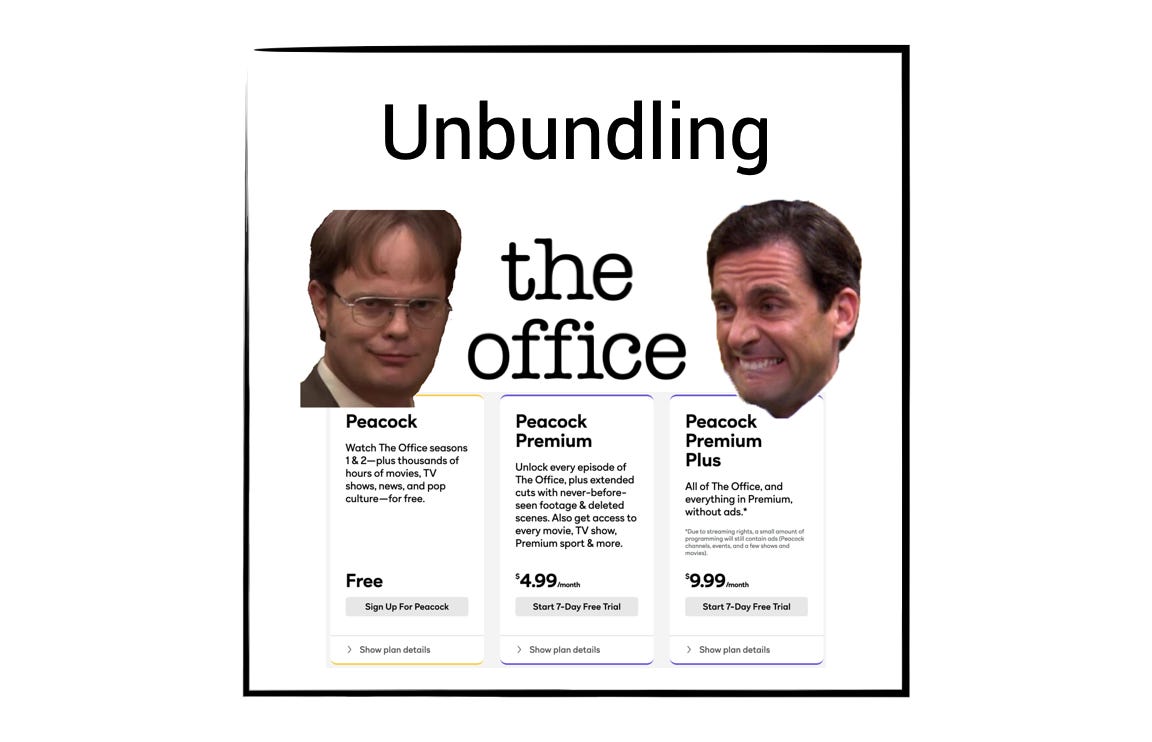

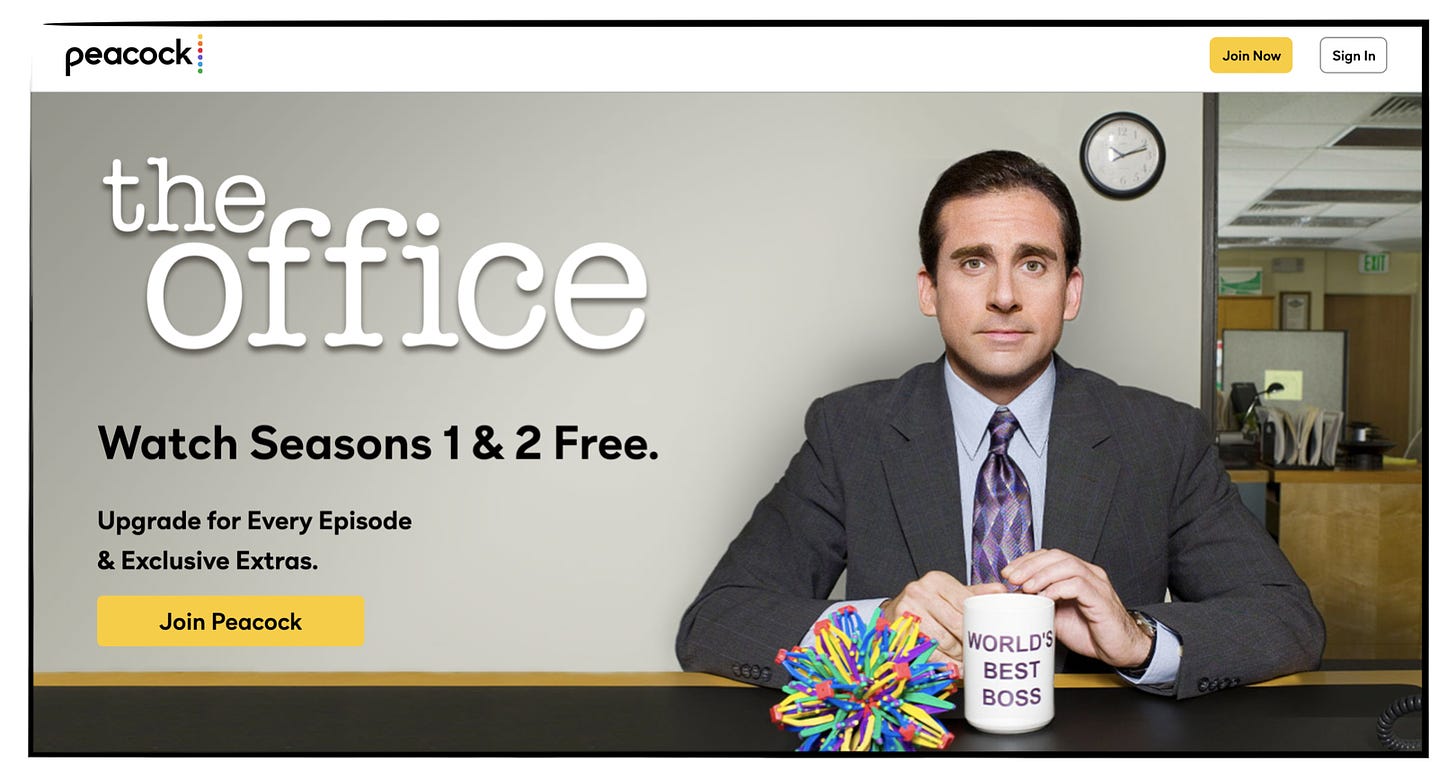
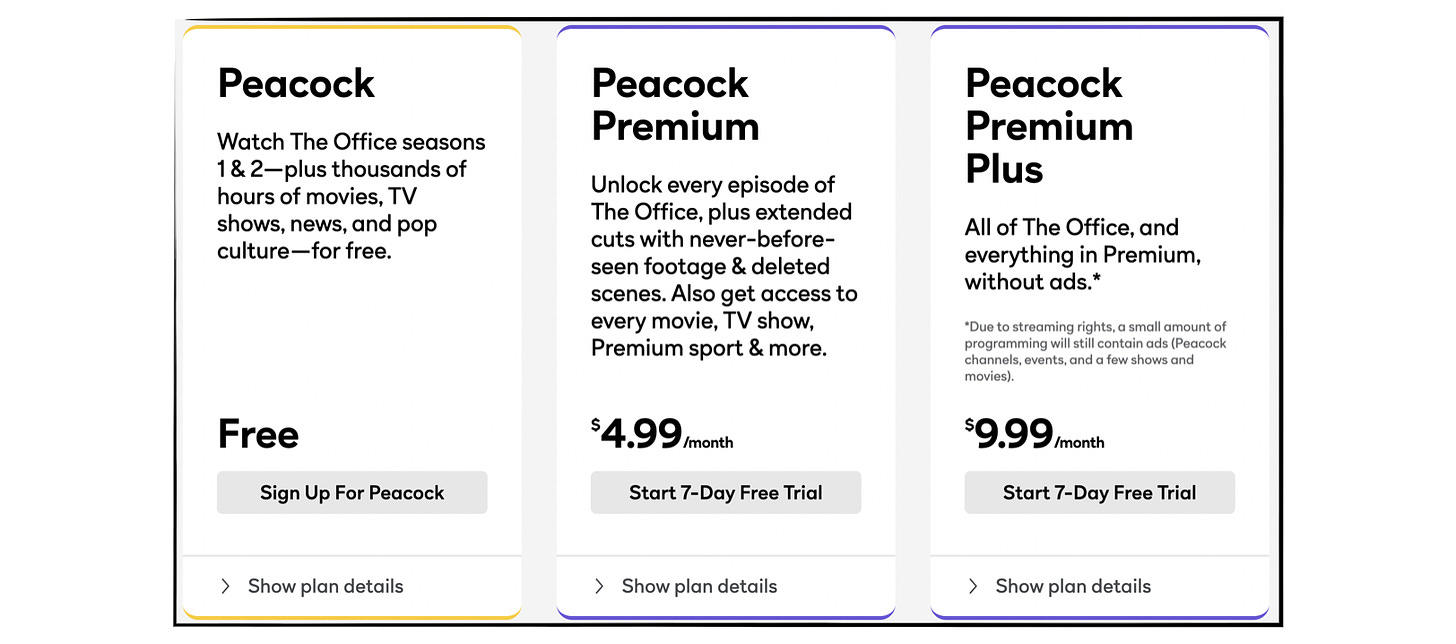
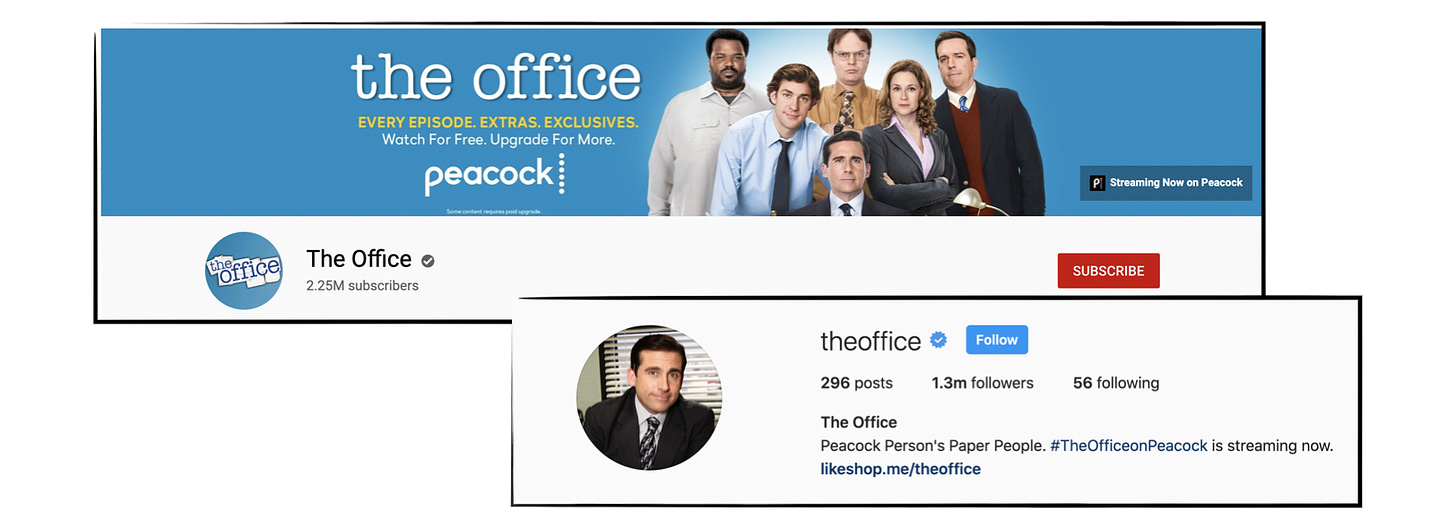
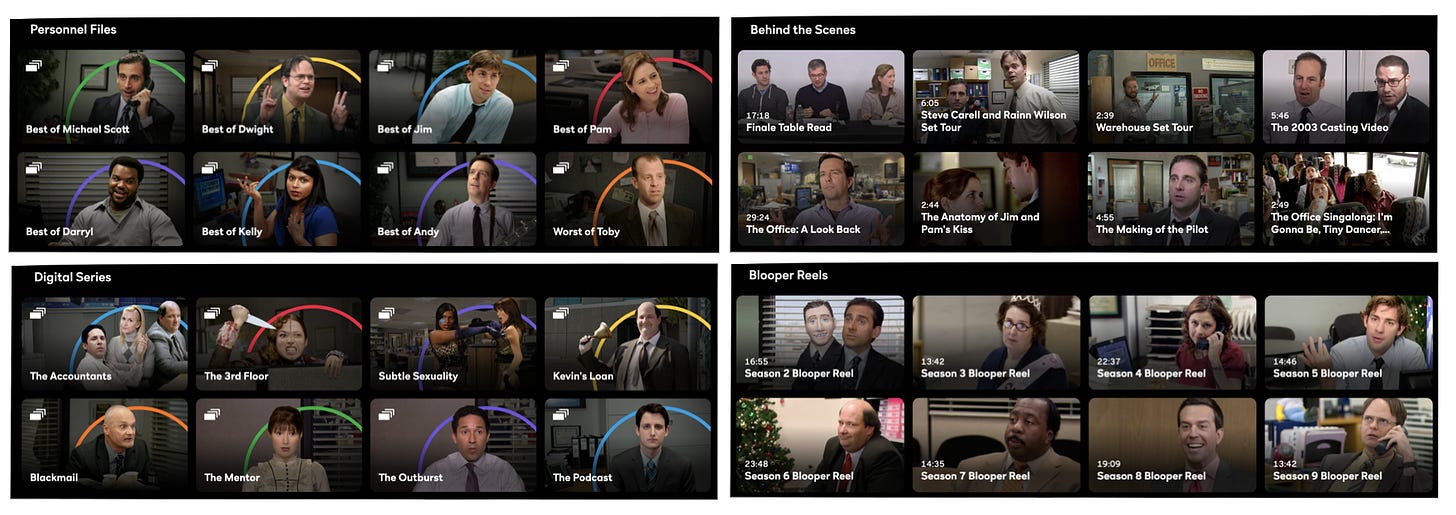
Loved Oral History of the Office, but the best office podcast is Office Ladies! https://officeladies.com/